Wildflowers - Deer Resistant Scatter Garden Seed Mix
From $499 USDUnit price /UnavailableDescription
 Includes a mix of the 22 of the most popular flower varieties that deer are known to stay away from. Scatter this mix of seeds in your garden and keep the deer away.Wildflower establishment requires some important steps:- Site selection/preparation: It's important to address competition from weeds: pull, till, or use organic herbicides. If planting in the spring/summer you can wait for weeds to germinate, control and then plant the wildflower seeds.
Includes a mix of the 22 of the most popular flower varieties that deer are known to stay away from. Scatter this mix of seeds in your garden and keep the deer away.Wildflower establishment requires some important steps:- Site selection/preparation: It's important to address competition from weeds: pull, till, or use organic herbicides. If planting in the spring/summer you can wait for weeds to germinate, control and then plant the wildflower seeds.
- Seeding: You will want to have good seed to soil contact, broadcasting by hand is a good approach on small plot, may want to mix with an inert carrier, sand or other. Raking in and covering with soil 2-3 times seed thickness.
- Watering: During establishment for the first month, can be from rain in spring or supplement with irrigation.
- Timing: The best time to plant is in spring to early summer and even again in late fall.
This mix includes all of the following seed varieties:GENUS/SPECIES
COMMON NAME
TYPE
HEIGHT
COLOR

Achillea millefolium
Yarrow
P
12 to 36
White

Aquilegia caerulea
Columbine
p
24 to 36
Yellow'/Red/Violet/Blue

Centaurea cyanus
Bachelor Buttons
A
12 to 36
Blue or Mix

Chrysanthemum maximum
Shasta Daisy
P
16 to 24
White

Clarkia amoena
Godetia
A
8 to 14
Pink/White

Coreopsis lanceolata
Lance Leaf Coreopsis
P
18 to 36
Yeloow

Delphinium consolida
Larkspur
A
12 to 36
Whie/Pink/Blue/Violet

Digitalis purpurea
Foxglove
B/P
24 to 48
Purple/Cream

Echinacea purpurea
Purple Coneflower
P
24 to 36
Purple

Eschscholzia californica
California Poppy
TP
12 to 18
Yellow/Orange

Gaillardia aristata
Blanketflower
P
18 to 30
Yellow-Red

Iberis umbellata
Candytuft
A
12 to 18
White/Pink/Violet

Liatris spicata
Gayfeather
P
24 to 48
Purple

Lupinus perennis
Lupine
P
12 to 36
Blue
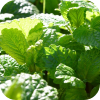
Monarda citriodora
Lemon Mint
A
12 to 24
Lavander/White

Papaver rhoeas
Red shirley poppy
A
12 to 30
Red

Papaver rhoeas
Mixed Shirley Poppy
A
12 to 30
White/Pink/Red

Ratibida columnifera
Red Prairie Coneflower
B/P
12 to 36
Red/Yellow

Ratibida columnifera
Yellow Prairie Coneflower
B/P
12 to 36
Yellow

Rudbeckia hirta
Black Eyed Susan
A/B/P
12 to 36
Yellow

Salvia coccinea
Scarlet Sage
A/P
12 to 24
Red

Viscaria occulata
Soapwort
A
9 to 12
Pink
Annual
41%
PERENNIAL
59%
Wildflowers - Annual Cut Flower Scatter Garden Seed Mix
From $499 USDUnit price /UnavailableDescription
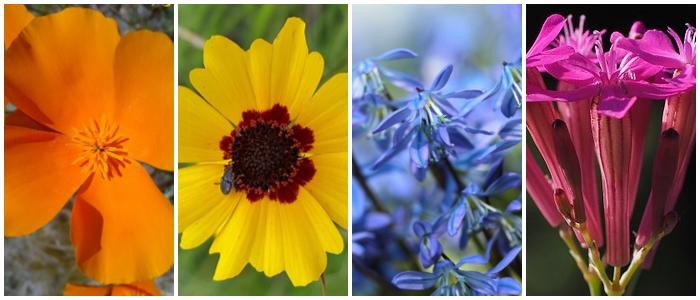 Includes a mix of 25 popular annual flower varieties that will produce a beautiful assortment of flowers suitable for cutting. The mix includes many of the flowers found in floral stores. This annual flower mix will blossom all-year-long creating a bountiful source of flowers.
Includes a mix of 25 popular annual flower varieties that will produce a beautiful assortment of flowers suitable for cutting. The mix includes many of the flowers found in floral stores. This annual flower mix will blossom all-year-long creating a bountiful source of flowers. Scatter this mix of seeds in your garden for the most beautiful assortment of flowers you've ever seen.
Wildflower establishment requires some important steps:- Site selection/preparation: It's important to address competition from weeds: pull, till, or use organic herbicides. If planting in the spring/summer you can wait for weeds to germinate, control and then plant the wildflower seeds.
- Seeding: You will want to have good seed to soil contact, broadcasting by hand is a good approach on small plot, may want to mix with an inert carrier, sand or other. Raking in and covering with soil 2-3 times seed thickness.
- Watering: During establishment for the first month, can be from rain in spring or supplement with irrigation.
- Timing: The best time to plant is in spring to early summer and even again in late fall.
This mix includes all of the following seed varieties:GENUS/SPECIES
COMMON NAME
TYPE
HEIGHT
COLOR

Callistephus chinensis
Aster
A
12 to 36
Blue/Pink/White/Purple

Calendual officinalis
Pot Marigold
A
12 to 24
Yellow/Orange/Cream

Centaurea cyanus
Bachelor Button, Polka Dot Mix
A
12 to 36
Mix

Clarkia amoena
Godetia
A
8 to14
Pink/White
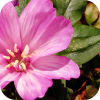
Clarkia elegans
Clarkia
A
18 to 30
Pink/Lavender

Coreopsis tinctoria
Plains Coreopsis
A
12 to 36
Yellow-Maroon

Cosmos bipinnatus
Cosmos, Dwarf Sensation
A
36 to 60
White/Pink/Crimson/Rose

Cynoglossum firmament
Chinese Forget Me Not
A/B
18 to 24
Blue

Delphinium ajacis
Larkspur
A
12 to 36
White/Pink/Blue/Violet

Dimorphotheca aurantiaca
African Daisy
A
8 to16
Orange/Salmon/White

Eschscholzia californica
Poppy, Mission Bells
TP
12 to 18
Yellow/Orange

Gaillardia pulchella
Annual Gaillardia
A
12 to 24
Yellow-Red

Gypsophila elegans
Baby's Breath
A
8 to 18
White

Helianthus annuus
Sunflower
A
24 to 72
Yellow

Helichrysum monstrosum
Strawflower mixed
A
24 to 36
Yellow/White/Red/Pink

Iberis umbellata
Candytuft
A
12 to 18
White/Pink/Violet

Lavateria trimestris mix
Tree mallow
A
24 to 48
White/Pink

Lobularia maritima
Alyssum, tall Sweet
TP
8 to 16
White

Oenotheria lamarckiana
Evening Primrose
B/P
24 to 60
Yellow

Papaver rhoeas
Shirley Poppy
A
12 to 30
White/Pink/red

Phacelia campanularia
California Bluebells
A
8 to 20
Blue

Rubeckia hirta
Black Eyed Susan
A/B/P
12 to 36
Yellow

Silene armeria
Catchfly
A/B
16 to 22
Pink

Tagetes erecta
Marigold
A
12 to 16
Yellow/Orange/Maroon

Zinnia elegans
Zinnia
A
12 to 36
White/Purple/Yellow/Orange.Red
A-Annual
75%
B-Biennial
18%
TP-Tender Perennial
7%
Wildflowers - Hummingbird & Butterfly Scatter Garden Seed Mix
From $499 USDUnit price /UnavailableDescription
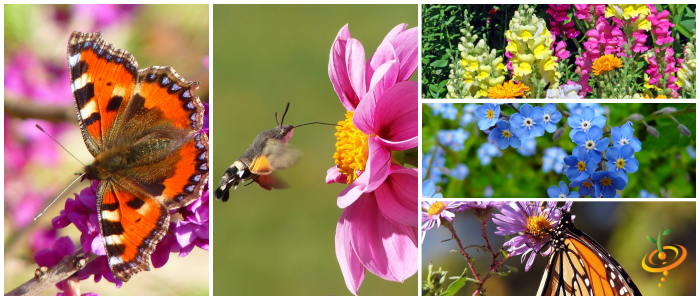
Includes a mix of the 23 of the most popular flower varieties known to attract Hummingbirds and Butterflies! Scatter this mix of seeds in your garden for the most beautiful assortment of flowers you've ever seen.
Wildflower establishment requires some important steps:
Site selection/preparation: It's important to address competition from weeds: pull, till, or use organic herbicides. If planting in the spring/summer you can wait for weeds to germinate, control and then plant the wildflower seeds.Seeding: You will want to have good seed to soil contact, broadcasting by hand is a good approach on small plot, may want to mix with an inert carrier, sand or other. Raking in and covering with soil 2-3 times seed thickness.Watering: During establishment for the first month, can be from rain in spring or supplement with irrigation.Timing: The best time to plant is in spring to early summer and even again in late fall.
This mix includes all of the following seed varieties:GENUS/ SPECIES
COMMON NAME
PLANT TYPE
PLANT HEIGHT (inches)
FLOWER COLORS
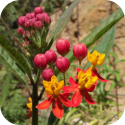
1. Asclepias tuberosa
Butterfly Milkweed
Perennial
24 to 36
Orange

2. Aquilegia caerulea
Mrs. Scott Elliot
Perennial
24 to 36
Yellow/Red/Violet/Blue

3. Antirrhinum tetra
Snapdragon
Annual
24 to 36
Lavender/Yellow/Pink/White

4. Callistephus chinensis
Aster
Annual
24 to 36
Blue/Pink/White/Purple

5. Cosmos bipinnatus
Cosmos Sensation Mix
Annual
36 to 60
White/Pink/Crimson/Rose

6. Cynoglossum amabile
Chinese Forget Me Not
Annual/
Biannual18 to 20
Blue

7. Delphinium consolida
Larkspur Giant Imperial Mix
Annual
12 to 26
White/Pink/Blue/Violet

8. Digitalis purpurea
Foxglove
Biannual/
Perrenial24 to 48
Purple/Cream

9. Gilia tricolor
Bird's Eyes
Annual
12 to 18
Lavender-White

10. Lavatera trimestris
Treemallow
Annual
24 to 48
White/Pink

11. Linaria maroccana
Toadflax
Annual
12 to 24
Pink/Yellow/Violet

12. Lobularia maritima
Alyssum, Carpet of Snow
Annual
8 to 16
White

13. Lychnis chalcedonica
Maltese Cross
Perennial
24 to 36
Scarlet

14. Mirabilis jalapa
Four O'clock
Tender
Perennial12 to 24
Red/Pink/Yellow.White
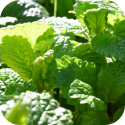
15. Monarda citriodora
Lemon Mint
Annual
12 to 24
Lavender/White

16. Nicotiana alata
Tobacco Plant
Annual
12 to 24
Red/White/Green/Yellow

17. Papaver rhoeas
Red Corn Poppy
Annual
12 to 30
Red

18. Penstemon strictus
Gloxinia Penstemon
Perennial
24 to 36
Blue

19. Salvia coccinea
Scarlet Sage
Annual/
Perennial12 to 24
Red

20. Silene armeria
Catchfly
Annual/
Biannual16 to 22
Pink

21. Tagetes erecta
Marigold Crackerjack
Annual
24 to 36
Yellow/Orange

22. Tropaeolum majus
Nasturtium Dwarf Jewel
Annual
12 to 36
Red/Yellow/Orange/Pink

23. Zinnia elegans
Zinnia
Annual
12 to 36
White/Purple/Yellow/Orange/Red
- From $199 USDUnit price /Unavailable
Description
The Slenderette Bush Bean is a sleek French-type green bean. A vigorous grower that produces high yields of slim 5" long stringless pods on a compact plant. This sweet, juicy, tender, crunchy bean would taste great in a European thin/thick bean salad served alongside wider Roma II Italian beans.
- Easy to grow
- Stringless variety
- Sweet, juicy, tender, and crunchy
- High yields
SEED PLANTING TIPS
- Botanical name: Phaseolus vulgaris
- Depth to plant seeds: 1" deep
- Spacing between plants: 4" apart
- Spacing between rows: 18"-24" apart
- Days to germinate (sprout): 5-10 days
- Germination soil temps: 70F-85F
- Soil needs: 6.0-7.0 pH
- Sun needs: Full sun
- Frost hardy: No
- Planting season: Spring, summer, fall
- # of plants per sq. ft.: Appx. 4 plants per sq. ft.
- Days to maturity: 50-55 days
Click here to view our full Bean grow guide
Good companion plants: Cucumber, Pea, Rosemary, Thyme, Tomato
Bean, Runner/Pole - Scarlet Runner
From $299 USDUnit price /UnavailableDescription

The Scarlet Runner Pole Bean is just about as traditional a vegetable you can grow in your garden. Named for its showy red hummingbird attractors (flowers) it puts out on 6'-8' vines that will grow on fences, trellises, and yes, poles. This high-yielding runner bean produces foot-long pods with speckled red-purple beans, but pick them sooner for best flavor. Tolerates heat and drought, and doesn’t mind cool nights.
- Easy to grow
- Heat tolerant
- Long pods up to 8"-12”
- Eat fresh, shelled, or dried
SEED PLANTING TIPS
- Botanical name: Phaseolus coccineus
- Depth to plant seeds: 1" deep
- Spacing between plants: 5" apart
- Spacing between rows: 18"-24" apart
- Days to germinate (sprout): 8-14 days
- Germination soil temps: 70F-85F
- Soil needs: 6.0-7.0 pH
- Sun needs: Full sun
- Frost hardy: No
- Planting season: Spring, summer
- # of plants per sq. ft.: Appx. 4 plants per sq. ft.
- Days to maturity: 65-75 days
Click here to view our full Bean grow guide
Good companion plants: Cucumber, Pea, Rosemary, Thyme, Tomato
- From $299 USDUnit price /Unavailable
Description
The Royal Burgundy Bush Bean has so many things going for it—colorful, beautiful, tasty, plentiful, long-producing—but the coolest thing is that it grows in cool weather. Dark purple 5"-6" pods produced high on the plant make for a doubly easy harvest. When cooked, watch them change color from royal purple to royal green.
- Easy to grow
- High yields
- Continuous production throughout growing season
- Grows in cool weather
SEED PLANTING TIPS
- Botanical name: Phaseolus vulgaris
- Depth to plant seeds: 1" deep
- Spacing between plants: 4" apart
- Spacing between rows: 18"-24" apart
- Days to germinate (sprout): 5-10 days
- Germination soil temps: 70F-85F
- Soil needs: 6.0-7.0 pH
- Sun needs: Full sun
- Frost hardy: No
- Planting season: Spring, summer, fall
- # of plants per sq. ft.: Appx. 4 plants per sq. ft.
- Days to maturity: 50-55 days
Click here to view our full Bean grow guide
Good companion plants: Cucumber, Pea, Rosemary, Thyme, Tomato
Bean - Jicama/Mexican Yam Bean
From $099 USDUnit price /UnavailableDescription
Jicama - Mexican Yam Bean
- Pachyrhizus erosus, commonly known as jicama, Mexican yam bean, or Mexican turnip, is the name of a native Mexican vine, although the name most commonly refers to the plant's edible tuberous root. (source/wikipedia)
- Grows as a large vine.
- Day to Maturity | 80 days
-
Best Months to Plant | [April - June] Beans like sun and water. Give them lots of it and they'll grow fast.
-
Pole Beans | Beans can be grown in average soil, almost anywhere in the United States. Set 3 rough barked, 6 foot poles in the ground, tepee fashion, and tie together at the top
Click here for complete Pole Bean grow guide
- Pachyrhizus erosus, commonly known as jicama, Mexican yam bean, or Mexican turnip, is the name of a native Mexican vine, although the name most commonly refers to the plant's edible tuberous root. (source/wikipedia)
Potato (Early Season) - Cal White
From $399 USDUnit price /UnavailableDescription
-
Quick Overview
• Early-season 60-80 to maturity.
• Heavy yields
Details
Cal White is a long white fleshed potato with brilliant white skin. It produces heavy yields of large potatoes. In fact Cal White surprised many people by setting new records for potato yields in California tests. If you like white bakers this one is the one.
NOTE: We do not use chemicals to prevent our potatoes from sprouting. So the seed potatoes you order may have already begun to sprout when they arrive. This is okay-in fact some consider it desirable.
-
Potato (Mid-Season) - Purple Majesty (Organic rounds)
From $999 USDUnit price /UnavailableDescription
-
Quick Overview
• Mid Season
• Deep purple
Details
Oblong, mid season potato with smooth dark purple skin. Almost solid purple inside unlike All Blue. very good table quality. Makes a great blue potato salad.
NOTE: We do not use chemicals to prevent our potatoes from sprouting. So the seed potatoes you order may have already begun to sprout when they arrive. This is okay-in fact some consider it desirable.
-
Potato (Mid-Season) - Norland, Dark Red (Organic rounds)
From $999 USDUnit price /UnavailableDescription
-
Quick Overview
• Mid-season 80-90 days to maturity.
Details
This potato has deep red - almost burgundy skin (with shallow eyes) and white flesh. It makes good potato salad, keeps well, has good disease resistance and moderate scab resistance. This old favorite is high yielding. The red skin fades to pink in storage!
NOTE: We do not use chemicals to prevent our potatoes from sprouting. So the seed potatoes you order may have already begun to sprout when they arrive. This is okay-in fact some consider it desirable.
-
Potato (Mid-Season) - Huckleberry Gold (Organic rounds)
From $899 USDUnit price /UnavailableDescription
-
Quick Overview
• Mid-season 80-90 days to maturity.
Details
It's perfect for all of those purple and gold fans out there!! This round to oval tuber has purple skin and a yellow flesh. Excellent baked, boiled, or fried. This medium size tuber is a moderate keeper.
NOTE: We do not use chemicals to prevent our potatoes from sprouting. So the seed potatoes you order may have already begun to sprout when they arrive. This is okay-in fact some consider it desirable.
-
Potato (Mid-Season) - Russet Pioneer (Organic/Heirloom)
From $299 USDUnit price /UnavailableDescription
-
Quick Overview
• Mid Season
• Medium YieldDetails
Mid Season. Blocky russet type. Long oval even tubers. Best ways to cook, roasting, frying, & baking. High yielder. Medium-long storage.
NOTE: We do not use chemicals to prevent our potatoes from sprouting. So the seed potatoes you order may have already begun to sprout when they arrive. This is okay-in fact some consider it desirable.
-
Garlic - (Soft Neck) Italian Late (Organic)
From $299 USDUnit price /UnavailableDescription
Quick Overview
• Beautiful to braid!
• Fast growing
• Softneck
Details
Light colored wrappers covering cloves which are generally fat and round. The extra-tight skin makes it a better keeper. This variety matures later than Early Italian Purple and tends to be somewhat smaller then Early Italian Purple as well. Good braiding type. Available Spring and Fall.
How to Plant GarlicGarlic can be planted in the spring as soon as the ground can be worked, but fall planting is recommended. Bulbs will grow bigger and more flavorful when you plant them in the fall. Plant 6 to 8 weeks before your first hard frost. In southern areas, February or March can be a better time to plant.
Key Planting Info:
- Break apart cloves from bulb but keep the papery husk on each individual clove.
- Ensure soil is well-drained with plenty of organic matter. Plant in Full Sun.
- Plant 4 inches apart & 2 inches deep, in their upright position (the wide end down and pointed end facing up).
- Come springtime, shoots will begin to emerge.
Click here for a more detailed Garlic Grow Guide ->Garlic - (Soft Neck) Inchelium Red (Organic)
From $299 USDUnit price /UnavailableDescription
Quick Overview
• Organic• Large bulbs• Softneck
• Dense cloves
Details
From Inchelium, WA, on the Colville Indian Reservation. The bulbs are large - to 3+ inches in diameter. 8-20 cloves of good size. Mild, but lasting, flavor, with a hint of hot! Dense cloves store well. The flavor can get stronger in storage. This vigorous soft-necked variety won a Rodale taste test of 20 garlic strains - named \"Very Best of the Soft-Necks.\" Available Spring and Fall.
How to Plant Garlic
Garlic can be planted in the spring as soon as the ground can be worked, but fall planting is recommended. Bulbs will grow bigger and more flavorful when you plant them in the fall. Plant 6 to 8 weeks before your first hard frost. In southern areas, February or March can be a better time to plant.
Key Planting Info:
- Break apart cloves from bulb but keep the papery husk on each individual clove.
- Ensure soil is well-drained with plenty of organic matter. Plant in Full Sun.
- Plant 4 inches apart & 2 inches deep, in their upright position (the wide end down and pointed end facing up).
- Come springtime, shoots will begin to emerge.
Click here for a more detailed Garlic Grow Guide ->- From $198 USDUnit price /Unavailable
Description
Easily identify plantings in seedling trays and bedding flats. The PERFECT seed and plant marker.
• White
• High-grade recycled styrene / Made in the USA
• Water resistant
• Sharpie-approved
Potato, Fingerling (Late-Season) - French Classic (Organic)
From $899 USDUnit price /UnavailableDescription
About this variety:
- This fingerling is gourmet quality with smooth skin and yellow flesh.
- There is usually a little pink/red ring just under the skin.
- It produces medium to large tubers. heirloom seed.
NOTE: We do not use chemicals to prevent our potatoes from sprouting. So the seed potatoes you order may have already begun to sprout when they arrive. This is okay-in fact some consider it desirable.
- This fingerling is gourmet quality with smooth skin and yellow flesh.
Potato (Mid-Season) - Russet Burbank (Organic rounds)
From $599 USDUnit price /UnavailableDescription
About this variety:
- Russet skin, shallow eyes, and white flesh are characteristic of this long-oval russet.
- Great taste and perfect baked, fried or boiled.
- Long-storing, scab-resistant potato needs a consistent moisture supply.
- Most widely grown potato in the U.S. originating from Luther Burbanks early plant breeding.
- This is the potato that made Idaho famous.
NOTE: We do not use chemicals to prevent our potatoes from sprouting. So the seed potatoes you order may have already begun to sprout when they arrive. This is okay-in fact some consider it desirable.
- Russet skin, shallow eyes, and white flesh are characteristic of this long-oval russet.
Potato (Late-Season) - Yellow Finn (Organic rounds)
From $799 USDUnit price /UnavailableDescription
About this variety:
- This potato has an unusual pear shape (large flattened oval), deep yellow-tan skin and waxy yellow flesh.
- The taste is natural butter-like, and is good boiled, baked, fried or included in soups.
- This excellent keeper needs the lush, long season of the maritime Northwest to really perform.
- With even moisture, it will continue to yield until frost kills.
- This potato is the #1 yellow, our best-selling late season variety.
NOTE: We do not use chemicals to prevent our potatoes from sprouting. So the seed potatoes you order may have already begun to sprout when they arrive. This is okay-in fact some consider it desirable.
- This potato has an unusual pear shape (large flattened oval), deep yellow-tan skin and waxy yellow flesh.
Potato (Early-Season) - Yukon Gold (Organic rounds)
From $999 USDUnit price /UnavailableDescription
About this variety:
-
This round tuber has smooth, thin yellow skin with pink coloring around shallow eyes and yellow flesh.
- Early Season.
- Moderate Keeper.
- Heat tolerant.
-
It provides excellent flavor when baked, boiled or made into salads or fries; too moist for hash browns.
-
The best selling early variety is a moderate keeper, and is drought-tolerant.
NOTE: We do not use chemicals to prevent our potatoes from sprouting. So the seed potatoes you order may have already begun to sprout when they arrive. This is okay-in fact some consider it desirable.
-
Potato, Fingerling (Late-Season) - Purple
From $999 USDUnit price /UnavailableDescription
About this variety:
- Purple Pelisse is the only purple fingerling.
-
Late-season 100-120 days to maturity.
-
The medium- to large-sized tubers need really rich soil and lots of water to prosper.
- This is a very popular variety at the farmers market!
NOTE: We do not use chemicals to prevent our potatoes from sprouting. So the seed potatoes you order may have already begun to sprout when they arrive. This is okay-in fact some consider it desirable.
- Purple Pelisse is the only purple fingerling.
Potato (Early-Season) - King Edward (Organic/Heirloom)
From $399 USDUnit price /UnavailableDescription
About this variety:
-
Early-season 60-80 to maturity.
King Edward is an early season potato. It has white flesh with moist, waxy texture.
- This is a good storage potato.
- The "Edward" leaves repel bugs, such as Colorado Potato Beetles, Flea Beetles, and Potato Leaf Hoppers.
- Late blight resistant.
NOTE: We do not use chemicals to prevent our potatoes from sprouting. So the seed potatoes you order may have already begun to sprout when they arrive. This is okay-and in fact some consider it desirable.
-
Potato (Mid-Season) - German Butterball (Organic rounds)
From $999 USDUnit price /UnavailableDescription
About this variety:
-
Mid-season 80-90 days to maturity.
-
Order this extremely popular potato early! Its smooth, thick, golden, and netted skin and butter yellow flesh are characteristics of this small to medium oblong tuber with outstanding taste.
-
Great for hash browns, fries, steaming or baking, and it stores well.
-
Excellent flavor.
-
So delicious it sells out fast, so order early!
NOTE: We do not use chemicals to prevent our potatoes from sprouting. So the seed potatoes you order may have already begun to sprout when they arrive. This is okay-in fact some consider it desirable.
-
Epsom Salts Soil Fertilizer (THE BEST!)
From $199 USDUnit price /UnavailableDescription
OMRI LISTED & APPROVED for Organic Use
One of the BEST fertilizers you will come across is EPSOM salts. Just mix into your soil and see amazing results!
Read: How and Why you should add Epsom Salts to Soil Now
EPSOM salts contain both magnesium and sulfur, two very important elements required for healthy plant growth.
When used in your garden as a natural source of magnesium... roses, tomatoes and peppers will thrive! You'll see your plants develop more "bushy", and deeper in color. Some gardeners boast their plants develop more blooms which will in turn provide larger yields of fruit especially on those tomato and pepper plants.Here are some ways to use EPSOM salts in the garden:
- METHOD #1: When planting, add one tablespoon (equivalent to 1 sampler pack) of EPSOM salts into the hole you've created,
- METHOD #2: Try mixing one tablespoon of EPSOM salts into a one gallon container filled with water. Now water the roots of your plant, directly after planting. Avoid getting this mixture on the leaves
Read: How and Why you really should add Epsom Salts to to your soil Now
Read: Introduction to Fertilizers
Read: Introduction to Soil Amendements- METHOD #1: When planting, add one tablespoon (equivalent to 1 sampler pack) of EPSOM salts into the hole you've created,
- From $399 USDUnit price /Unavailable
Description
Catnip is not the most beautiful plant you can grow, but it’s quite useful. The small spikes of white speckled flowers attract pollinators and beneficial insects to the vegetable garden. And the same compound that sends cats flying to the moon also sends mosquitoes flying away. Also repels ants, aphids, cabbage moths, cabbage white butterfly, cabbage worms, potato beetles, cucumber beetles, flea beetles, Japanese beetles, mice, roaches, slugs, squash bugs, voles, and weevils, which makes it a great companion for just about everyone (except Parsley). Reseeds easily and can become invasive. Use the minty leaves to flavor tea, pasta, vegetables, soups, and sauces.
- Mosquito repellent
- Can be invasive
- Grows 2'-3' tall
- Good for containers
As a medicinal herb, Catnip has been used internally to treat anxiety, colds, cough, fever, insomnia, nervousness, restlessness, sore throat, and upset stomach, and externally to treat black eyes and other bruises.⚠️ Medicinal properties are presented as information only, and are not a recommendation or prescription for use. Consult a medical professional before using any herb medicinally.
SEED PLANTING TIPS
- Botanical name: Nepeta cataria
- Life cycle: Herbaceous perennial
- Hardiness zones: 3-9
- Planting season: Spring, fall
- Days to maturity: 75-85 days; can begin harvesting when 6" tall
- Depth to plant seeds: 1/4" deep
- Days to germinate (sprout): 7-14 days
- Germination soil temps: 60F-70F
- Spacing between plants: 18"-24" apart
- Spacing between rows: 24"-36" apart
- # of plants per sq. ft.: Appx. 1 plant per 2 sq. ft.
- Soil types: Sandy, loamy, silty, rocky, poor, rich, dry, moist, well-drained
- Soil pH: 6.0-7.8
- Sun needs: Full sun, part shade
- Water needs: Low
- Cold stratify: Yes
- Frost tolerant: Yes
- Heat tolerant: No
- Drought tolerant: Yes
- Deer resistant: Yes
- Cat resistant: No
- Culinary use: Yes
- Medicinal use: Yes
Good companion plants: Bean, Beet, Broccoli, Brussels Sprouts, Cabbage, Carrot, Cauliflower, Collards, Cucumber, Eggplant, Fava Bean, Hyssop, Kale, Kohlrabi, Lavender, Lettuce, Mustard, Potato, Pumpkin, Radish, Rutabaga, Soybean, Strawberry, Squash, Tomato, Turnip, Zucchini
More facts about Catnip:
- Nepeta cataria. Perennial.
- Classic aromatic scent that is proven to attract cats. They absolutely love to roll around in it.
- Plant produces flavorful leaves that can be used in many culinary dishes and teas.
- Said to have medicinal properties to relieve cold and flu symptoms.
- Catnip is also a VERY effective mosquito repellent.
- According to ScienceDaily.com, nepetalactone, the essential oil in catnip that gives the plant its characteristic odor, is about ten times more effective at repelling mosquitoes than DEET — the compound used in most commercial insect repellents.
-
Simply grow catnip near the backyard or patio of your house.
- From $299 USDUnit price /Unavailable
Description
Let us tell you about Lettuce Leaf Basil. It’s a lovely Italian basil that grows huge leaves as big as your hand, with a flavor that’s sweeter and less spicy than other basils. Its crinkles hold onto dressing in salads, you need only one leaf for a sandwich or wrap, and you can use the rest as you would any other basil. Save the edible flower spikes to garnish seafood dishes and cocktails.Harvest the leaves and stems from the top part of the plant, and pinch off edible flower buds as they appear, which prevents the leaves from turning bitter, and signals the plant to branch out and grow more leaves, making a bushier plant. The more you harvest, the more it grows!
- Sweet and mild
- Huge 5"-6" leaves
- Grows 1'-2' tall
- Good for containers
- Tons of medicinal benefits!
As a medicinal herb, Basil has been used internally to treat anxiety, colds, colic, cough, depression, diarrhea, fever, flatulence, flu, indigestion, insomnia, intestinal parasites and worms, exhaustion, gastric pain, gonorrhea, lactation problems, migraine headache, nausea, stomach cramps, sore throat, and vomiting, and externally to treat acne, insect bites and stings, loss of smell, skin problems, snake bites.
⚠️ Do not use medicinally while pregnant.
⚠️ Medicinal properties are presented as information only, and are not a recommendation or prescription for use. Consult a medical professional before using any herb medicinally.
As a companion plant, Basil attracts hummingbirds, pollinators, and beneficial insects, and repels asparagus beetles, cabbage moths, cabbage white butterfly, cabbage worms, carrot rust fly, flies, maggots, mice, mosquitoes, spider mites, thrips, and tomato hornworms.
Shop all Basil Seeds Shop Good Companion Plants for Basil 📚 Grow Guide: Basil
Health Benefits of Genovese Basil
Basil is a known health tonic for expecting mothers and when mixed with tea it increases lactation in mothers. It is also a nerve tonic and young children are sometimes encouraged to chew on the leaves of basil because it stimulates brain cells and can increase memory.

See Basil Recipes & Growing Tips on our Pinterest Board
Shop all Basil Seeds Shop Good Companion Plants for Basil 📚 Grow Guide: Basil - From $299 USDUnit price /Unavailable
Description
Lemon Basil, also called Hoary Basil (for its fuzzy stems), is a hybrid cross between traditional basil and lime basil.The bright green leaves have a sweet lemony aroma and a tangy lemon-anise flavor that’s best used fresh in seafood dishes, fruit salads, lemonade, cocktails, and salad dressings. Add at the end of cooking to preserve the citrus flavor, then garnish with the edible flowers.
Harvest the leaves and stems from the top part of the plant, and pinch off edible flower buds as they appear, which prevents the leaves from turning bitter, and signals the plant to branch out and grow more leaves, making a bushier plant.
The more you harvest, the more it grows!
- Tangy lemon-anise flavor
- Culinary and medicinal
- Good for indoor gardens
- Good for containers
- Tons of medicinal benefits!
As a medicinal herb, Basil has been used internally to treat anxiety, colds, colic, cough, depression, diarrhea, fever, flatulence, flu, indigestion, insomnia, intestinal parasites and worms, exhaustion, gastric pain, gonorrhea, lactation problems, migraine headache, nausea, stomach cramps, sore throat, and vomiting, and externally to treat acne, insect bites and stings, loss of smell, skin problems, snake bites.
⚠️ Do not use medicinally while pregnant.
⚠️ Medicinal properties are presented as information only, and are not a recommendation or prescription for use. Consult a medical professional before using any herb medicinally.
As a companion plant, Basil attracts hummingbirds, pollinators, and beneficial insects, and repels asparagus beetles, cabbage moths, cabbage white butterfly, cabbage worms, carrot rust fly, flies, maggots, mice, mosquitoes, spider mites, thrips, and tomato hornworms.
Shop all Basil Seeds Shop Good Companion Plants for Basil 📚 Grow Guide: Basil
Health Benefits of Lemon Basil
Basil is a known health tonic for expecting mothers and when mixed with tea it increases lactation in mothers. It is also a nerve tonic and young children are sometimes encouraged to chew on the leaves of basil because it stimulates brain cells and can increase memory.

See Basil Recipes & Growing Tips on our Pinterest Board
Shop all Basil Seeds Shop Good Companion Plants for Basil 📚 Grow Guide: Basil - From $299 USDUnit price /Unavailable
Description
Greek Basil is a small-leaf dwarf variety that grows into a tight dome, about 1’ tall and wide. A great one for containers, hanging baskets, and indoor gardens. The bright green, oval leaves and soft stems have hints of clove and anise, and keep their flavor when dried. Use this variety to flavor herb butters and vinaigrettes, and the edible flowers as a garnish or salad green.Harvest the leaves and stems from the top part of the plant, and pinch off edible flower buds as they appear, which prevents the leaves from turning bitter, and signals the plant to branch out and grow more leaves, making a bushier plant.
The more you harvest, the more it grows!
- Basil-clove-anise flavor
- Compact plant
- Good for indoor gardens
- Good for containers
- Tons of medicinal benefits!
As a medicinal herb, Basil has been used internally to treat anxiety, colds, colic, cough, depression, diarrhea, fever, flatulence, flu, indigestion, insomnia, intestinal parasites and worms, exhaustion, gastric pain, gonorrhea, lactation problems, migraine headache, nausea, stomach cramps, sore throat, and vomiting, and externally to treat acne, insect bites and stings, loss of smell, skin problems, snake bites.
⚠️ Do not use medicinally while pregnant.
⚠️ Medicinal properties are presented as information only, and are not a recommendation or prescription for use. Consult a medical professional before using any herb medicinally.
As a companion plant, it attracts hummingbirds, pollinators, and beneficial insects, and repels asparagus beetles, cabbage moths, cabbage white butterfly, cabbage worms, carrot rust fly, flies, maggots, mice, mosquitoes, spider mites, thrips, and tomato hornworms.
Shop all Basil Seeds Shop Good Companion Plants for Basil 📚 Grow Guide: Basil


See Basil Recipes & Growing Tips on our Pinterest Board
Shop all Basil Seeds Shop Good Companion Plants for Basil 📚 Grow Guide: Basil - From $299 USDUnit price /Unavailable
Description
- (Citrullus lanatus) This is a HUGE watermelon variety that can grow up to 200 LBS!
- Very flavorful crisp bright red flesh
- The rind is striped and resistant to bruising -
Days to Maturity | 95 days
-
Best Months to Plant | [April - June] Watermelons are heat-loving plants that need lots of sun. They grow on a long vine, so make sure to give them plenty of space to roam around.
Follow SeedsNow.com's board Watermelon on Pinterest. - (Citrullus lanatus) This is a HUGE watermelon variety that can grow up to 200 LBS!
Sprouts/Microgreens - Lentils, Red
From $199 USDUnit price /UnavailableDescription
Sprouts/Microgreens - Lentils, Green
From $199 USDUnit price /UnavailableDescription
Sprouts/Microgreens - Bean, Mung
From $299 USDUnit price /UnavailableDescription
These delicious sprouts are popular and common as an integral part of Asian cuisine. Mung bean sprouts are quite thick and are crunchy with a nutty taste – mild and fresh. These can be served with salads, sprinkled as crunchy toppings, used in stir-fry, or simply enjoyed by themselves.
Squash (Summer) - Lebanese White Bush
From $099 USDUnit price /UnavailableDescription
- The Lebanese Squash is a very popular heirloom squash variety that grows extremely quickly - only 45 days
- Very flavorful and widely grown in the Middle East
-
A summer squash variety from Lebenon
-
Grows as a compact bush size plant (not as a vine)
- Fast-growing summer squash produces large yields
- Perfect for growing in small spaces
-
Days to Maturity | 45 days
The Lebanese, White Squash is a favorite amongst many home gardeners. Most would recommend planting 2-4 bushes to feed a family throughout the season, while for smaller families or couples, 2 plants would be plenty. It really depends on how much squash you love to eat and whether or not you're growing other varieties at the same time. We do however recommend planting at least two plants for better pollination. The better the pollination, the better the fruit count! It's been reported that some gardeners have experienced up to 15 fruits per plant, however, that is on the high side. Most plants will produce 4-6 fruit, again depending on the pollination and other variables that come into play. There's just not an exact answer for this. You're almost at the mercy of mother nature on this, but most would agree it's a great producer! They're better picked when young and tender unless you're planning on stuffing them, then baking. In that case, they are let to grow larger, again, which will keep the plant from producing more fruit if you don't harvest regularly from them. So the bottom line is, if you want more fruit, harvest more regularly and when the squash is young and tender. This will send signals to the plant to bloom and flower again to keep reproducing. Generally, this plant will get 2-3 feet high, but regular fertilizing would, of course, alter these numbers as well. If your soil is in good condition with lots of healthy organic matter, you should have no problem getting plants that reach this size. May we suggest growing on black plastic for weed & insect control?
Additional Details
Though considered a vegetable in cooking, botanically speaking, squash is a fruit (being the receptacle for the plant's seeds). Squash can be served fresh (in salads) and cooked (squash stuffed with meat, fried squash, baked squash).
- The Lebanese Squash is a very popular heirloom squash variety that grows extremely quickly - only 45 days
Pepper (Sweet) - Chocolate Bell
From $299 USDUnit price /UnavailableDescription
The Chocolate Bell Pepper is a fun one to grow. While the skin is maturing from green to brown, the inside is ripening from green to red, so you’re in for a surprise color combo with each one you snip off the vine. Crunchy and sweet with no heat. Ripens early, too. Pair with Chocolate Cherry Tomatoes on a bed of Red Romaine Lettuce for a delightful dark salad.- High yields
- Early producer
- Harvest any color
- Sweet and crunchy
SEED PLANTING TIPS
- Botanical name: Capsicum annuum
- Pepper size: Medium
- Plant support: Tomato cage or stake
- Depth to plant seeds: .25" deep
- Spacing between plants: 18"-24" apart
- Spacing between rows: 24"-36" apart
- Days to germinate (sprout): 7-21 days
- Germination soil temps: 75F-85F
- Soil needs: 6.0-7.0 pH
- Sun needs: Full sun
- Frost hardy: No
- Planting season: Spring, summer
- # of plants per sq. ft.: Appx. 1 plant per 2 sq. ft.
- Days to maturity: 65-80 days
Good companion plants: Basil, Carrot, Cucumber, Eggplant, Okra, Rosemary, Sage, Squash, Tomato
- Plant produces good yields of beautiful rich chocolate-brown sweet bell pepper
- Excellent for salads, stuffing, or cooking
- Very easy to grow
- Grows well in containers and tight spaces
- A must for the gourmet home gardener
All Peppers ⟐ Sweet Peppers 📚 Sweet Peppers Grow Guide - From $199 USDUnit price /Unavailable
Description
- Plant produces good yields of egg shaped tomatoes.
- The tomatoes are the size and shape of an egg.
- A firm tomato that keeps well. Does well in poor growing conditions.
SEED PLANTING TIPS
- Botanical name: Solanum lycopersicum
- Growth type: Indeterminate, trellis support, regular pruning
- Tomato size: Small
- Depth to plant seeds: 1/8" deep
- Spacing between plants: 24" apart
- Spacing between rows: 36"-48" apart
- Days to germinate (sprout): 7-14 days
- Germination soil temps: 75F-95F
- Soil needs: 6.0-6.5 pH
- Sun needs: Full sun
- Frost hardy: No
- Planting season: Spring, summer
- # of plants per sq. ft.: Appx. 1 plant per 2 sq. ft.
- Days to maturity: 75-80 days
Click here to view our full Tomato grow guide
Good companion plants: Basil, Borage, Onion, Parsley, Pepper
- Plant produces good yields of egg shaped tomatoes.
Tomato - Delicious (Indeterminate)
From $399 USDUnit price /UnavailableDescription
The Delicious Tomato has been known to produce huge 2-3 lb beefsteak tomatoes. This delightful slicer is solid, meaty, and juicy with a small seed core. No surprise that one of these grew to 7 lb, 12 oz, and held a 28-year world record for largest tomato. The typical size is 1-2 lbs, but stake well in case a record breaker grows on one of your vines.
- Extra large fruit
- Juicy and meaty
- Small seed core
- Delicious flavor
SEED PLANTING TIPS
- Botanical name: Solanum lycopersicum
- Growth type: Indeterminate, trellis support, regular pruning
- Tomato size: Large to Extra-Large
- Depth to plant seeds: .25" deep
- Spacing between plants: 24"-36" apart
- Spacing between rows: 36"-48" apart
- Days to germinate (sprout): 7-14 days
- Germination soil temps: 75F-95F
- Soil needs: 6.0-6.5 pH
- Sun needs: Full sun
- Frost hardy: No
- Planting season: Spring, summer
- # of plants per sq. ft.: Appx. 1 plant per 3 sq. ft.
- Days to maturity: 75-80 days
Click here to view our full Tomato grow guide
Good companion plants: Basil, Borage, Onion, Parsley, Pepper
- From $249 USDUnit price /Unavailable
Description
Yellow Canary Swiss Chard
-
The Yellow Canary Swiss Chard is a popular plant that produces some of the most amazing looking swiss chard leaves in a bright shades of yellow.
- Perfect for salads or steamed greens.
- One of this years most popular varieties to grow.
- Extremely healthy.
- Easy to grow.
-
Day to Maturity | 65 days
Additional DetailsSwiss chard is high in vitamins A, K and C, with a 175g serving containing 214%, 716%, and 53%, respectively, of the recommended daily value. It is also rich in minerals, dietary fiber and protein.
-
The Yellow Canary Swiss Chard is a popular plant that produces some of the most amazing looking swiss chard leaves in a bright shades of yellow.
Squash (Winter) - Burgess Buttercup
From $199 USDUnit price /UnavailableDescription
Squash (Winter), Burgess Buttercup
- Cucurbita maxima.
- Plant produces heavy yields of 8" long turban shaped green squash with silvery white stripes.
- The yellow orange flesh is very sweet and grows 3 to 5 lbs.
- The Burgess strain stores well.
-
A winter squash variety.
-
Day to Maturity | 90 days
- Cucurbita maxima.
- From $299 USDUnit price /Unavailable
Description
Tansy is a very powerful and popular herb. We recommend that you do a Google search to learn more about all the benefits and uses this plant has to offer. Happy planting!
....
Black Salsify (Black Oyster Plant/Scorzonera)
From $299 USDUnit price /UnavailableDescription
Black Salsify, also called Scorzonera and Black Oyster Plant, is a cold hardy perennial in the aster and lettuce family grown for its thin root with rough black skin over white flesh that can grow 1'-3' long if it has the room. Take care when harvesting, as the roots are delicate and snap easily. Any root left behind will re-grow!
It would be fun for a blind taste test, as the edible yellow dandelion-like flower petals smell like cocoa, the edible flower buds taste like okra, and the roots taste like oyster, asparagus, or artichoke, turning sweeter and earthier after a frost.
The stems and long, wide leaves that can grow 3'-4' tall are also edible. Delicious roasted, mashed, grilled, and pickled, or simply sautéed in a little butter for a rich, unusual side dish.
- Sweet, earthy flavor
- Roots can grow 1'-3' long if they have the room!
- Prefers cooler weather
- All parts are edible
- Cold hardy
SEED PLANTING TIPS
- Botanical name: Scorzonera hispanica
- Life cycle: Herbaceous perennial
- Hardiness zones: 5-9
- Planting season: Spring, fall
- Days to maturity: 100-120 days
- Depth to plant seeds: 1/2" deep
- Days to germinate (sprout): 7-28 days
- Germination soil temps: 60F-75F
- Spacing between plants: 3"-4" apart
- Spacing between rows: 18"-24" apart
- # of plants per sq. ft.: Appx. 16 plants per sq. ft.
- Soil types: Sandy, loamy, moist, well-drained
- Soil pH: 6.5-7.0
- Sun needs: Full sun
- Water needs: Average
- Cold stratify: No
- Frost tolerant: Yes
- Heat tolerant: Yes
- Drought tolerant: Yes
- Deer resistant: No
- Culinary use: Yes
Good Companion Plants: Beet, Carrot, Kohlrabi, Parsnip, Potato, Rosemary, Rutabaga, Sage, Thyme, Turnip
⚠️ Always consult with your doctor and primary care provider before using or consuming herbs, flowers, seeds and/or plants for medicinal purposes.
- From $199 USDUnit price /Unavailable
Description
- Perennial
- Low growing plant produces green leaves
- Used in salads and cooked like spinach
- Purslane is said to be effective in treatment of insect or snake bites on the skin, boils, sores, pain from bee stings, bacillary dysentery, diarrhea, hemorrhoids, postpartum bleeding, and intestinal bleeding
- Plant grows in poor soil and tolerates drought
⚠️ Always consult with your doctor and primary care provider before using or consuming herbs, flowers, seeds and/or plants for medicinal purposes.
- From $299 USDUnit price /Unavailable
Description
Mugwort, Herb
- 85 days.
- Artemisia vulgaris.
- Perennial.
- Plant produces beautiful fragrant leaves.
- Used to make tea to treat menstrual and menopausal problem.
- Stimulates and improves memory.
- Easy to grow.
- From $199 USDUnit price /Unavailable
Description
- Taraxacum officinalis. Perennial.
- This strain forms lush heads of leaves that will rival your favorite lettuce. The leaves are tender, fleshy and dark green.
- The plants spread up to 2 ft and the vitamin rich leaves can be eaten raw, boiled, stir fried and used in soup.
- The roots can be eaten raw, cooked or roasted and made into a coffee substitute.
- The flowers can be used to make fritters, tea and dandelion wine.
- From $199 USDUnit price /Unavailable
Description
- Produces good yields of 5" diameter multi color gourds
- This unusual gourds have 10 fingers pointing towards the blossom end
- Excellent for making crafts
- From $299 USDUnit price /Unavailable
Description
Cabbage, Brunswick
- Brassica oleracea.
- A heirloom variety dating back to 1924.
- Plant produces a large drumhead type cabbage.
- Used for making kraut.
- Suitable for spring, summer, and fall crops.
- Stores well. Suitable for home gardens and market growers.
Click here for complete Cabbage grow guideAdditional Details
Did you know? ❄️ Cabbage is an annual cool-season crop, hardy to frost and light freezes. A smaller cabbage head has better flavor and can stay in the field longer without splitting. To keep them small, plant close together or, when the head is almost full, give the plant a sharp twist to break up the roots. 😀 Cabbage is a wide spreading foliage plant with handsome leaves that form a tight, hard ball head on a strong central stem. Young plants may bolt if grown at 50F for a long time; however mature plants of late varieties improve flavor in cold weather.
Corn - Trucker's Favorite (Organic)
From $099 USDUnit price /UnavailableDescription
Bean, Runner/Pole - White Emergo
From $099 USDUnit price /UnavailableDescription
The White Emergo Runner Pole Bean twinkles with lots of sweet white flowers, which may be why it’s also known as Sweet White Runner Bean. Vigorous vines can grow to 10' to support long 8"-12" pods with creamy white beans inside. Pick young for snap beans and mature for shell beans, or let them dry for a bean similar to cannellini.
- Easy to grow
- Tasty white beans
- Long pods up to 8"-12”
- Eat fresh, shelled, or dried
SEED PLANTING TIPS
- Botanical name: Phaseolus coccineus
- Depth to plant seeds: 1" deep
- Spacing between plants: 5" apart
- Spacing between rows: 18"-24" apart
- Days to germinate (sprout): 8-14 days
- Germination soil temps: 70F-85F
- Soil needs: 6.0-7.0 pH
- Sun needs: Full sun
- Frost hardy: No
- Planting season: Spring, summer
- # of plants per sq. ft.: Appx. 4 plants per sq. ft.
- Days to maturity: 80-115 days
Click here to view our full Bean grow guide
Good companion plants: Cucumber, Pea, Rosemary, Thyme, Tomato
- From $099 USDUnit price /Unavailable
Description
continue shopping
YOU MAY ALSO LIKE
View all-
$29999 USDUnit price /Unavailable
-
All-in-One Heritage Tomato Garden Variety Pack
$3999 USD$4499Unit price /Unavailable -
All-in-One Mosquito Repellent Garden Variety Pack
$3999 USDUnit price /Unavailable -
All-in-One Medicinal Herb Garden Seed Bank
$9999 USDUnit price /Unavailable -
All-in-One Pepper Garden Variety Pack
$3999 USDUnit price /Unavailable -
All-in-One Chicken Garden Variety Pack
$3999 USDUnit price /Unavailable -
All-in-One Lettuce & Leafy Greens Variety Pack
$3999 USDUnit price /Unavailable -
All-in-One Culinary Herb Garden Variety Pack
$3999 USDUnit price /Unavailable -
All-in-One Homestead Seed Bank
$9999 USDUnit price /Unavailable -
All-in-One Medicinal Herb Garden Variety Pack
$4999 USDUnit price /Unavailable -
All-in-One Root Crop Garden Variety Pack
$3999 USDUnit price /Unavailable -
All-in-One Fall/Winter Variety Pack
$3999 USDUnit price /Unavailable -
All-in-One Sprouts/Microgreens Variety Pack
$3499 USDUnit price /Unavailable -
All-in-One Hydroponic Greens Variety Pack
$3999 USDUnit price /Unavailable -
All-in-One Fall/Winter Seed Bank
$8999 USDUnit price /Unavailable -
All-in-One Sprouts/Microgreens Seed Bank w/Sprouting Jar
$6999 USD$7999Unit price /Unavailable -
All-in-One Culinary Herb Garden Seed Bank
$8999 USDUnit price /Unavailable -
All-in-One Spring/Summer Seed Bank
$8999 USDUnit price /Unavailable -
All-in-One Urban Garden Variety Pack
$3999 USDUnit price /Unavailable -
All-in-One Cucumber Garden Variety Pack
$2999 USDUnit price /Unavailable -
*NEW!* Wildflower Scatter Garden Variety Pack
$3999 USDUnit price /Unavailable -
All-in-One SAVE THE BEES! Garden Variety Pack
$3999 USDUnit price /Unavailable -
All-in-One Salsa Garden Variety Pack
$3999 USDUnit price /Unavailable -
All-in-One Tower Garden Variety Pack
$3999 USDUnit price /Unavailable
FEATURED COLLECTIONS
View allcontinue shopping







 Includes a mix of 25 popular annual flower varieties that will produce a beautiful assortment of flowers suitable for cutting. The mix includes many of the flowers found in floral stores. This annual flower mix will blossom all-year-long creating a bountiful source of flowers.
Includes a mix of 25 popular annual flower varieties that will produce a beautiful assortment of flowers suitable for cutting. The mix includes many of the flowers found in floral stores. This annual flower mix will blossom all-year-long creating a bountiful source of flowers. 




































































































































































































































